
This article mainly introduces LinuxMySQL5.7.18 yum method from uninstallation to installation process diagram, friends in need can refer to the following
After struggling for a long time, after thinking about it, I finally figured out the yum installation process. I have written about binary package installation before. Here I use yum to install it. The environment is the same, Centos7.2+ MySQL5.7.18.
Every step refers to many articles, which will be listed one by one later. Because this machine has already been installed, simply follow the steps step by step to uninstall and then reinstall.
This article is implemented through a series of relatively copycat methods. For users like me who have not been exposed to Linux for a long time, it is relatively easy to understand and accept. For example, download the file directly under Windows and drag it to the Linux system. Instead of downloading with wget command, directly use the editing function of winscpeditor instead of vim command editing.
Uninstall
Operating system version

rpm -qa | grep -i mysql rpm -qa | grep -i mysql命令查看已经安装过的组件。

Use the yum -y remove command to uninstall the installed MySQL component, use the following command, for the above Uninstall those that have been installed separately.
yum -y remove mysql-community-libs-5.7.18-1.el7.x86_64 yum -y remove mysql-community-common-5.7.18-1.el7.x86_64 yum -y remove mysql-community-client-5.7.18-1.el7.x86_64 yum -y remove mysql57-community-release-el7-10.noarch yum -y remove mysql-community-server-5.7.18-1.el7.x86_64
Many pictures will not be taken. Here is an example.
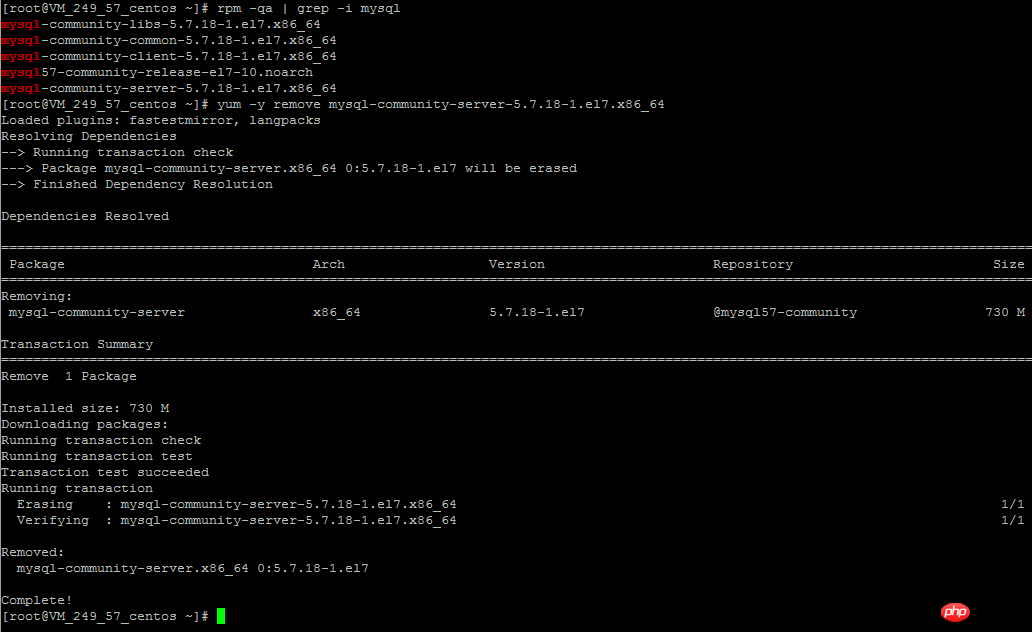
Use rpm -qa | grep -i mysql again to view the installed components. They have been completely uninstalled.

Whereis mysqlQuery the directories generated by the previous installation and remove them respectively.

Installation
Download the repo source of MySQL. As for what this file is for, I understand it personally. It will automatically help you configure the yum source of the MySQL installation component. This file can be downloaded under Windows and then
file, drag it to the root directory of the linux server through winscp
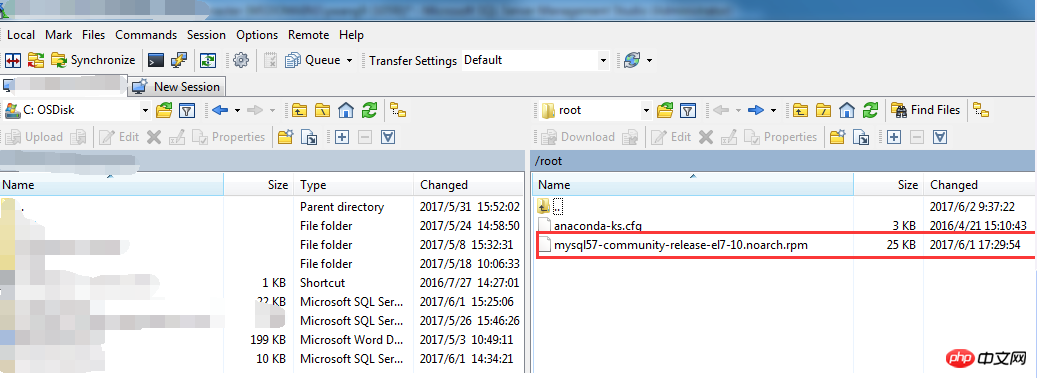

rpm -ivh mysql57-community-release-el7-10.noarch.rpm

yum install mysql-community-server
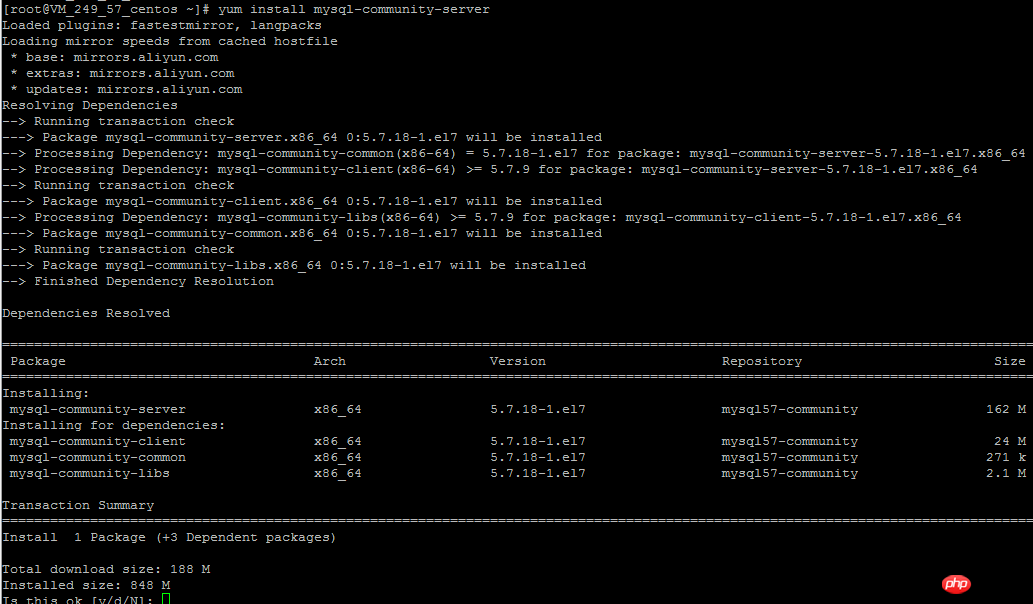

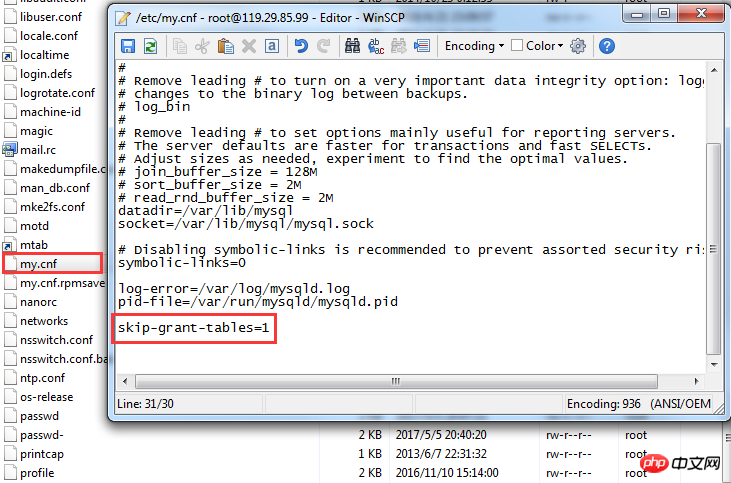
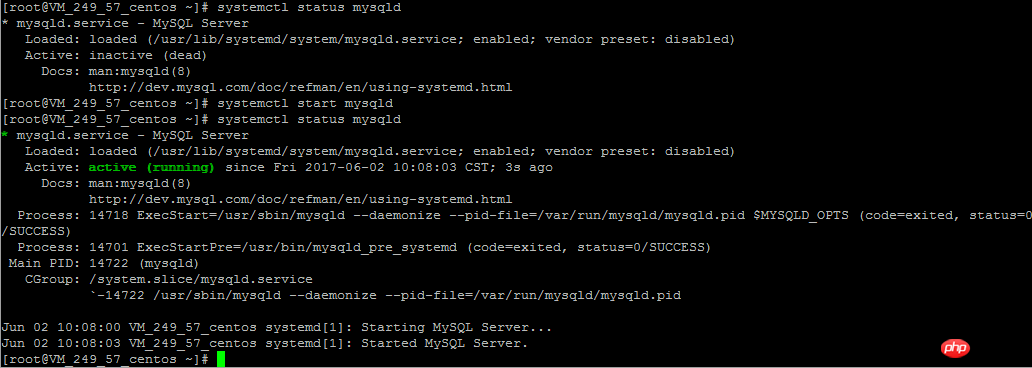

update user set authentication_string=PASSWORD('newpassword') where User='root';
利用这个语句修改root用户可远程访问,update user set host = '%' where user = 'root'

重启之后,可以用预制的密码登陆连接至MySQL
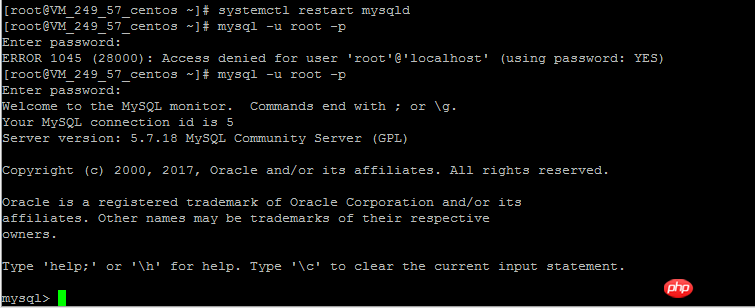
整个过程还是比较简单的,熟悉的话,也就是几分钟的事
这么折腾一遍其实花不了多久时间,只不过是自己不熟悉,一边摸索一边尝试,如果有人指导一下或者多摸索一下就会简单很多
The above is the detailed content of Detailed explanation of MySQL5.7.18 yum method from uninstallation to installation under Linux (picture and text). For more information, please follow other related articles on the PHP Chinese website!




